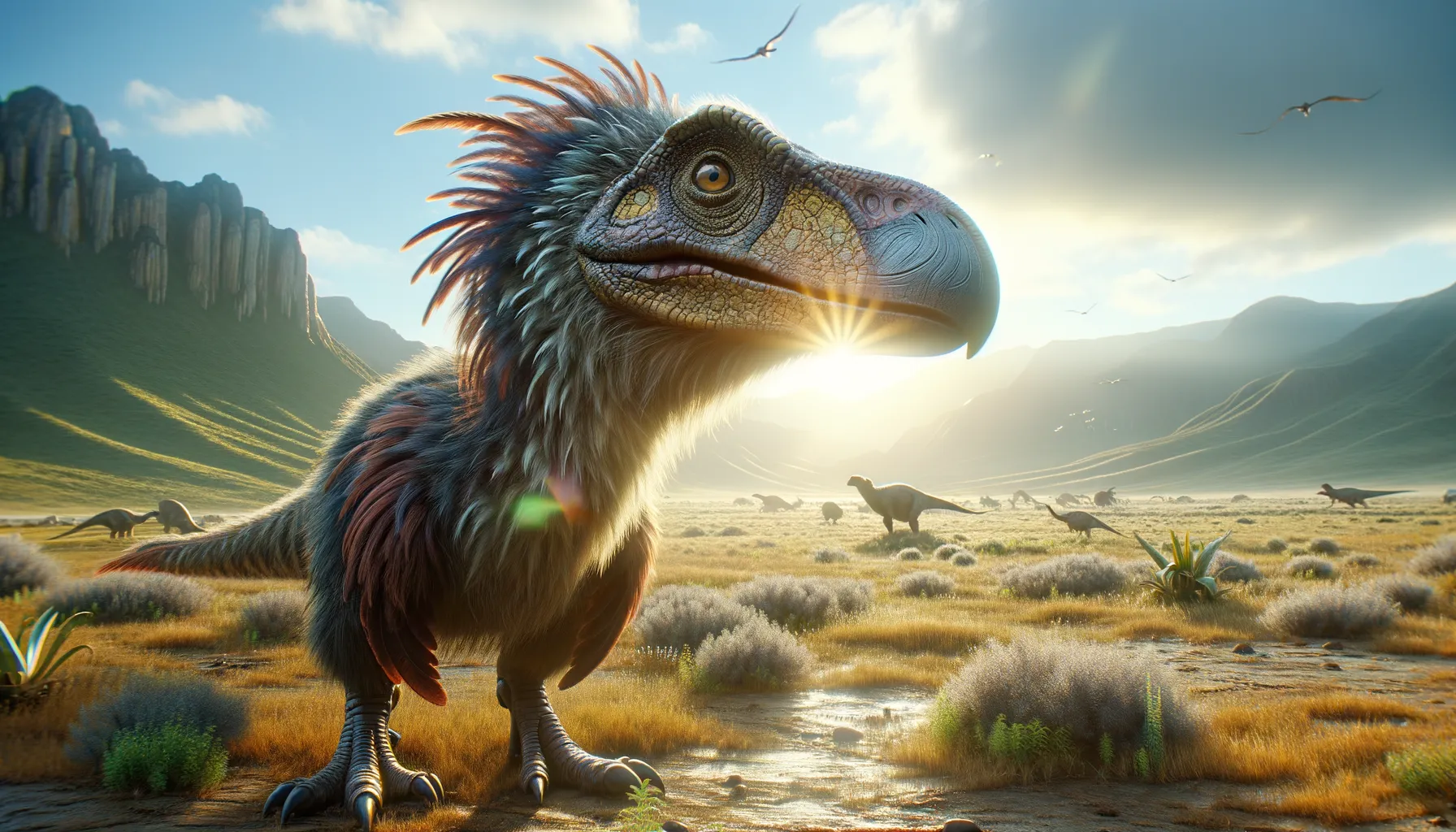
Gobiraptor
Unmasking mysteries of the ancient Cretaceous!
Period
Cretaceous
Length
About 2 to 3 meters long.
Height
Roughly 1 meter tall at the hips.
Weight
Approximately 20 to 60 kilograms.
Gobiraptor was a small, feathered dinosaur with a bird-like appearance, roaming the earth during the Cretaceous period. Known for its unique beak shape, it likely fed on a variety of foods, making it an adaptable scavenger in its environment. Its remains have primarily been found in Mongolia, offering insight into the diverse dinosaur fauna that once thrived there.
Diet
Gobiraptor had a varied diet, possibly including seeds, insects, and small animals. Its unique beak shape suggests it could process a range of food types in its habitat.
Hunting
As an omnivore, Gobiraptor was not primarily a hunter. It likely scavenged and foraged for food, using its beak to extract nourishment from its environment.
Environmental challenges
Gobiraptor faced the challenges of rapidly changing climates during the Late Cretaceous period. Competition for resources was fierce, requiring adaptability to survive. Predation from larger carnivorous dinosaurs was a constant threat, influencing its behavior and survival strategies.
Speed
Relatively slow, suitable for short distances.
Lifespan
Likely around 10 to 15 years.
First discovery
First discovered in the Gobi Desert, Mongolia.
Fun Facts
- Gobiraptor lived during the Late Cretaceous period, about 70 million years ago.
- This dinosaur was discovered in the Gobi Desert of Mongolia, which is how it got its name.
- Gobiraptor was an oviraptorid, a group of dinosaurs known for their bird-like features.
- It had a toothless beak, which suggests it might have had a varied diet, possibly including plants and small animals.
- Unlike many other dinosaurs, Gobiraptor might have been covered in feathers.
- The size of Gobiraptor was relatively small, estimated at around 1 to 2 meters long.
- Fossils of Gobiraptor were first described and named by scientists in 2019.
Growth and Development
Gobiraptor exhibited typical growth patterns for small theropods, starting life as a hatchling and growing rapidly in its first years. Juveniles were likely more vulnerable, gaining independence as they approached adulthood. The growth stages were marked by changes in their feathers and body proportions.
Habitat
Gobiraptor lived in the arid and semi-arid regions of what is now Mongolia. This habitat consisted of open plains and sparse vegetation, providing both challenges and resources for survival. Seasonal changes in the region presented both opportunities and threats, influencing its adaptive behaviors.
Interaction with other species
Gobiraptor would have coexisted with various species, including herbivorous dinosaurs and predatory theropods. It may have competed for resources with other omnivorous and herbivorous dinosaurs. Its interactions likely influenced its behavioral adaptations, including social structures.
Natural lifespan
Its natural lifespan was likely 10 to 15 years.
Reproduction
Gobiraptors likely reproduced by laying eggs, similar to modern birds. Nesting sites would have been carefully chosen to optimize safety and temperature. Parental care might have involved guarding nests and protecting young from predators.
Social behaviour
Gobiraptor may have exhibited social behaviors, possibly forming small groups for protection. Group dynamics could involve cooperation in food sourcing and defense against predators. Social structures might have been influenced by environmental pressures and the availability of resources.
Fossil locations
Fossils of Gobiraptor have been found in the Gobi Desert of Mongolia, providing significant insights into its lifestyle. The area has yielded numerous dinosaur fossils, making it a critical site for paleontological research. These discoveries have helped reconstruct the ecological context of the Late Cretaceous period in this region.
